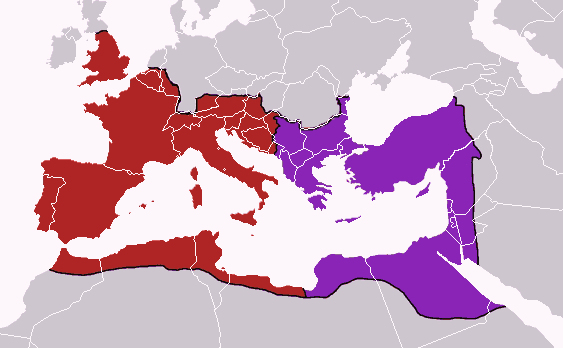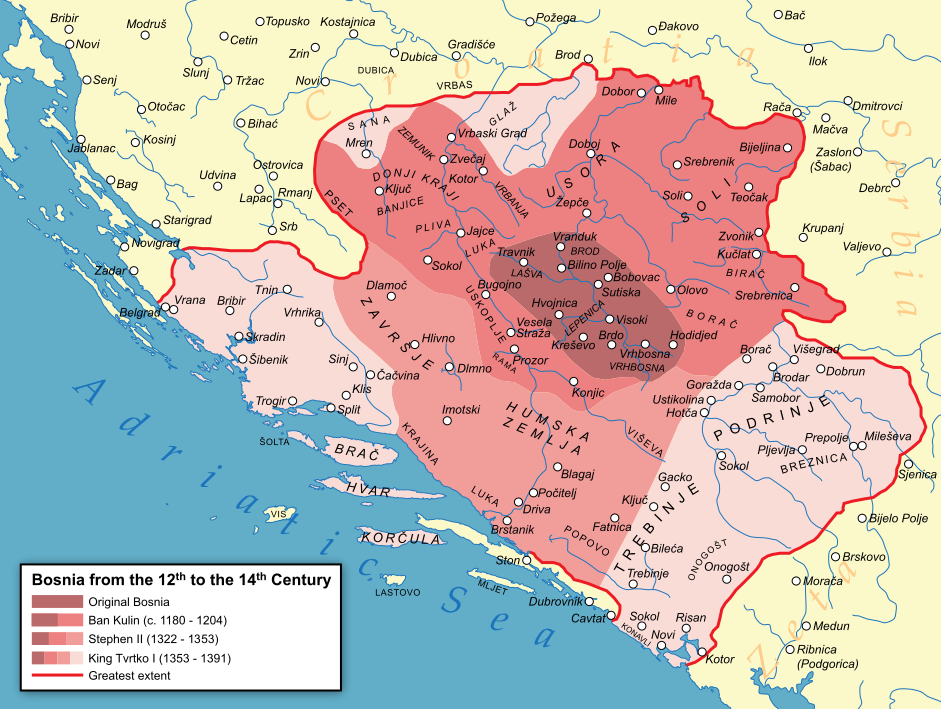Prehistory and Roman Era
Bosnia has been inhabited at least since Neolithic times. In the late Bronze Age, the Neolithic population was replaced by more warlike Indo-European tribes known as the Illyrians.
Called Illyricum in ancient times, the area now called Bosnia & Herzegovina was conquered by the Romans in the 2nd and 1st centuries B.C. and folded into the Roman province of Dalmatia. The division of the Roman Empire in 395 onto the Western Roman Empire and Eastern Roman Empire (or Byzantine Empire) saw the territories of the area remaining largely under the influence of the western entity, although some fringes around the river Drina were influenced by the Byzantines, thus the future presence of the Latin and Greek Orthodox religions.
In the 4th and 5th centuries A.D., Goths overran that portion of the declining Roman Empire and occupied the area until the 6th century, when the Byzantine Empire claimed it.

Middle Ages
Slavs began settling the region during the 7th century. Around 1200, Bosnia won independence from Hungary and endured as an independent Christian state for some 260 years.
The expansion of the Ottoman Empire into the Balkans introduced another cultural, political, and religious framework. The Turks conquered Bosnia in 1463. During the roughly 450 years Bosnia and Herzegovina were under
Ottoman rule, many Christian Slavs became Muslim.
Bosnia also developed a sizable Jewish population, with many Jews settling in Sarajevo after their expulsion from Spain in 1492. However, through the 19th century the term Bosnian commonly included residents of all faiths.

Modern Era
At the Congress of Berlin in 1878, Austria-Hungary was given a mandate to occupy and govern Bosnia & Herzegovina. The country was annexed by the Austro-Hungarian Empire on Oct. 7, 1908.
The assassination of Austrian archduke Franz Ferdinand in Sarajevo on June 28, 1914, precipitated the start of World War I (1914–1918). Bosnia & Herzegovina were annexed to Serbia as part of the newly formed Kingdom of Yugoslavia on Oct. 26, 1918.
When Germany invaded Yugoslavia in 1941, the resistance fighters fought a fierce guerrilla war against the Nazi and Italian Fascist troops. At the end of World War II, Bosnia & Herzegovina were reunited into a single state as within the newly established Yugoslavia under Tito.
In 1991, Bosnia & Herzegovina declared independence from Yugoslavia and became an independent state after a four year war.
![By Hoshie [GFDL (http://www.gnu.org/copyleft/fdl.html) or CC-BY-SA-3.0 (http://creativecommons.org/licenses/by-sa/3.0/)], via Wikimedia Commons](https://bosnia4u.com/wp-content/uploads/2017/01/Screenshot-2017-05-05-23.53.02-1024x816.png)
![By User:PANONIAN (en:Image:M_bih03.png) [Public domain], via Wikimedia Commons](https://bosnia4u.com/wp-content/uploads/2017/01/1024px-Map_Bih_entities-1024x969.png)



Comments are closed.